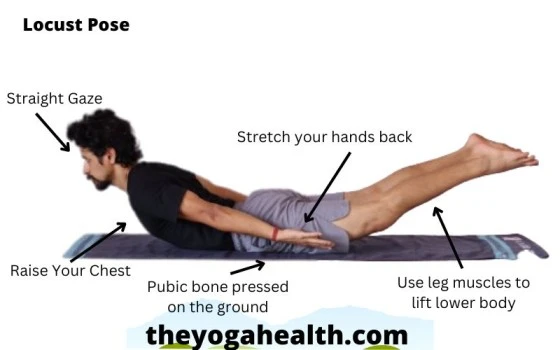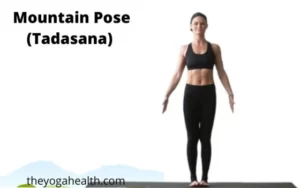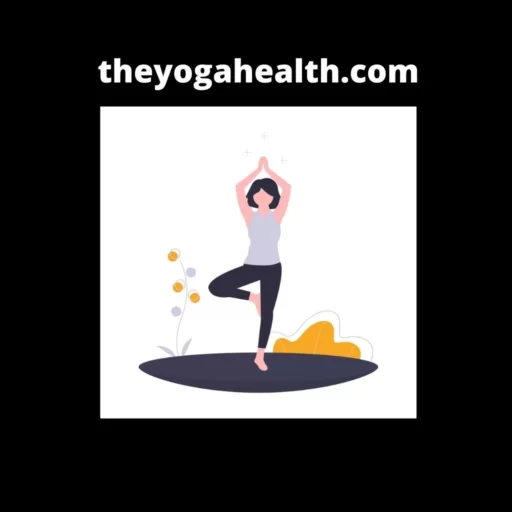In this article we will help you to master the Salabhasana (Locust Pose) and delve into the benefits, techniques, and tips to help you improve your posture and flexibility through this powerful yet easy yoga asana.
Whether you’re a beginner or an experienced practitioner, this will equip you with the knowledge and insights to make the most of your practice to achieve outstanding results.
Table of Contents
Understanding Salabhasana (Locust Pose)
Locust Pose is relatively simple to perform and can be performed safely by beginners. It is the basic posture of Hatha Yoga. This asana when regularly practiced will increase the flexibility of the body.
This asana is a dynamic backbend pose that targets the muscles of the back, buttocks, and legs. It entails balancing on your tummy while elevating your belly, arms, and legs off the ground.
This asana not only strengthens the muscles but also improves spinal alignment, posture, and flexibility. It particularly works on waist and back muscles, as a result, people suffering from lower back pain get relief.
Meaning of Salabhasana (Locust Pose)
The Salabhasana yoga asana is also known as “Locust Pose” in English language. ‘Salabha’ in the Sanskrit language means ‘locust’ or ‘Grasshopper’and ‘asana’ means ‘pose’ or ‘posture’. When this asana is performed the pose resembles a locust resting on the ground, hence the name.
It is always important that yoga asana should be performed correctly so that maximum benefit can be derived from it and no harm is caused by improperly doing it.
Basic details
| Sanskrit Name | Salabhasana |
| Meaning | Salabha means ‘Locust’ Asana means ‘Pose’ |
| Englsih Name | Locust Pose |
| Difficulty Level | Beginner |
| Position | lying belly down on the floor |
How to do Locust pose
- Lie flat on the floor on your stomach, face downwards, and palms facing upward. Now stretch your arms back.
- Exhale, raise your head, chest, and legs off the floor in one go as high as possible for you.
- Your hands and ribs should not rest on the floor. Your abdominal front portion of the body should only be on the floor and it should bear the weight of the body
- Contract your buttocks and stretch your thighs. Keep your legs fully extended and straight. Your legs should be touching at thighs, knees, and ankles.
- To exercise the muscles in your upper back, extend your hands as far back as you can.
- Stay in this position as long as it is possible for you with normal breathing.
Lifting the chest and the legs off the ground will first be challenging, but as your abdominal muscles get stronger, it will get simpler.

Locust Pose Benefits
This Pose has the Following Benefits:
1.Aid Digestion and Relieve Gastric and Flatulence Issues:
When you practice the this Pose, it helps stimulate the abdominal organs, including the digestive system. This stimulation can aid in digestion and relieve problems like gastric issues and flatulence.
2. Strengthen and Stretch the Spine:
This Pose primarily focuses on stretching the spine. As you raise your legs and upper body off the ground, your spine is extended and becomes more elastic. This stretching action benefits various spine-related issues by improving flexibility and relieving tension.
3. Relieve Pain in the Sacral and Lumbar Areas:
Back pain and discomfort frequently affect the sacral and lumbar regions. By practicing the this Pose, you engage and strengthen the muscles in these areas, which can help alleviate pain and provide relief.
4. Help with Slipped Disk Problems:
Regular practice of this Pose can be beneficial for individuals suffering from slipped disk problems. The asana helps strengthen the back muscles and provides support to the spine, potentially reducing the need for surgical treatment.
5. Promote Bladder and Prostate Health:
This Pose also has positive effects on the bladder and prostate gland. By engaging the core muscles and stimulating the abdominal area, this asana helps maintain the health of these organs.
6. Strengthen Stomach and Back Muscles:
As you lift your legs and upper body off the ground in this Pose, it engages and strengthens the muscles in the stomach and back areas. Regular practice can lead to stronger core muscles, which can improve posture and provide stability to the spine.
7. Assist with Menopause and Menstrual Disorders:
This Pose can be helpful for women experiencing menopause and menstrual disorders. The stretching and strengthening actions of this asana help improve blood circulation in the pelvic region, potentially reducing symptoms and providing relief.
8. Aid in Urological Issues and Constipation:
In addition to bladder health, this Pose can be beneficial for urological issues. The pose helps stimulate the abdominal organs, promoting better functioning of the urinary system. Moreover, this asana can also assist with constipation by stimulating the digestive system.
9. Help in Curing Sciatica:
Regular practice of this Pose may contribute to the treatment of Sciatica, a condition characterized by pain radiating along the sciatic nerve. The pose helps strengthen the back muscles and stretch the spine, potentially reducing pain and discomfort associated with Sciatica.
A variation of this pose should also be tried to relieve pain in the lower part of the back.
If you find Salabhasana difficult to perform then you can also start with Ardh Salabhasana
Precautions
Here are some important points to keep in mind when practicing this pose:
1.Clear Your Bowel before Practice:
It is recommended to practice Salabhasana after clearing your bowels in the morning. This ensures that your stomach is empty and comfortable during the practice.
2.Ideal Timing for Practice:
The morning time is considered the best for performing Salabhasana. If more time is required for practice, make sure there is a gape of 3–4 hour between your last meal and the practice. This allows for proper digestion and prevents any discomfort.
3. Breathe Normally through Your Nose:
While practicing Salabhasana, always breathe naturally through your nose. Avoid breathing through your mouth. Breathing through the nose helps regulate the flow of oxygen and maintains a steady rhythm throughout the pose.
4. Avoid If You’ve Had Abdominal Surgery:
If you have undergone any abdominal surgery or operation, it is important to avoid practicing Salabhasana. This precaution is necessary to prevent any strain or discomfort in the abdominal area.
5. Not Recommended for Pregnant Women:
Pregnant women should avoid practicing Salabhasana. As the pose involves exerting pressure on the abdomen and lower body, it is not suitable during pregnancy. It’s best to consult with a healthcare professional for appropriate exercises during this time.
6. Caution for Hip and Spinal Issues:
If you have any hip or spinal issues, it is advisable to avoid Salabhasana. The pose involves lifting the legs and upper body, which can strain these areas. Prioritize your safety and consult a healthcare professional or a qualified yoga instructor for alternative poses or modifications.
7. Listen to Your Body:
Always pay attention to how your body feels during the yoga practice. It is crucial to quit right away if you feel faint, lightheaded, or uncomfortable.These signs indicate that the pose may not be suitable for your current condition. Take breaks when needed and always prioritize your well-being.
8. Gradually Increase Duration:
Avoid overdoing asana, especially if you are a beginner. Start with a comfortable duration and gradually increase the time as you build strength and flexibility. This approach allows your body to adapt to the pose and reduces the risk of strain or injury.
9. Consult Your Physician for Health Issues:
If you have any underlying health issues or concerns, it is always recommended to consult your physician before starting this asana or any new exercise regimen. They can provide personalized guidance based on your specific health condition and advise you on the suitability of the pose.
Remember, practicing yoga safely is crucial to ensure a positive and beneficial experience. By following these guidelines and seeking professional advice when necessary, you can enjoy the benefits of Salabhasana while taking care of your overall well-being.
Tips for Success
To optimize your experience with this Pose, consider these helpful tips:
Start with short practice sessions and gradually increase the duration as your strength and flexibility improve.
Work with in your limits to avoid any injuries always Listen to your body and avoid pushing beyond your limits. Respect your body’s boundaries and make adjustments accordingly.
Warm up your body with gentle stretches and Sun Salutations before attempting this Pose to prevent injuries.
Incorporate the this Pose into a well-rounded yoga routine that includes other asanas and relaxation techniques for a holistic practice.
Conclusion for Salabhasana (Locust Pose) :
Mastering Salabhasana (Locust Pose) can significantly improve your posture, flexibility, and overall well-being. By consistently integrating this powerful asana into your yoga practice, you will experience enhanced strength, increased energy, and a greater sense of body awareness.
If you are regular with your routine of doing yoga asana then it is a must for you to include in it. This asana is relatively simple to perform and brings in lots of benefits over time. It strengthens the stomach and back muscles, improves body posture, and relieves issues like back pain.
FAQs for Salabhasana (Locust Pose) :
Q1. What is Salabhasana good for
Salabhasana is a backbend Yoga asana. This pose is good for legs, buttocks, spine, and also stretches abdomen, chest and shoulders. This asana helps to strengthen muscles around the spine that is good for the people with back pain.
Q2. What is the time duration of Salabhasana
One can stay in this pose for about 30 to 60 seconds or about three to five breaths in one stretch.
Q3. Who should not do Salabhasana
Pregnant women and people who have under done abdominal surgery or operation should avoid this pose.
Share your experience of doing this pose and let us know if you have any questions or comments regarding this Pose in the comments section below.





